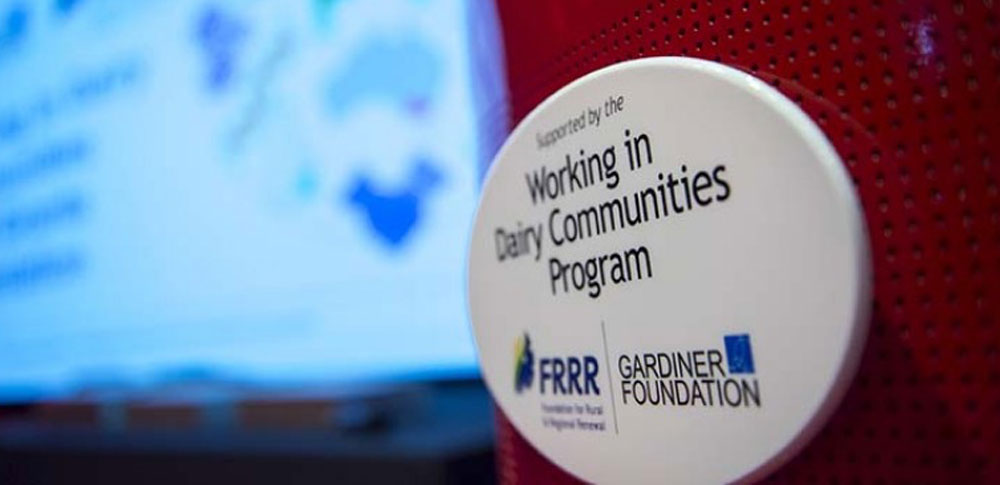In 2003 the Gardiner Dairy Foundation partnered with the Foundation for Rural and Regional Renewal (FRRR) to initiate the Working in Dairy Communities small grants program. It assists small communities in the dairy regions of Victoria with grants of up to $5000.
These grants aim to strengthen communities, help build their capacity to deal with local issues and enhance existing community infrastructure. It is an efficient and remarkably cost effective granting program to deliver, with Gardiner Dairy Foundation paying only a 10% administration fee to FRRR to administer the program. Over its first 10 years of operation, the program delivered 272 grants, totalling $1,096,369, with an average size of $3,861.
At the 10 year anniversary of the program, in 2012, we looked a little closer at the program’s impact to get an insight into the needs and priorities of small dairy communities across Victoria.
Communities want facilities to share and a few stitches in time
Similarly to FRRRs own flagship Small Grants for Rural Communities program the Working in Dairy Communities small grants tend to be for physical items, upgrades and renovations.
Most of the project objectives are simple with short timelines and illustrate the resourcefulness of rural and regional communities – if the leaky roof was fixed, the playground upgraded or the dishwasher installed then the project aim was generally accomplished!
The majority of grants made were indeed to purchase physical equipment for community facilities and groups. Unsurprisingly, the fast moving space of IT equipment was a popular area, along with audio-visual items for shared use. Other items applied for were those that help community spaces to flourish tables, chairs and catering appliances such as dishwashers and fridges. Childrens learning resources (books and toys) were also well-represented.
The second and third highest categories of grants made were for building, renovation and infrastructure projects these tended to be focused of improving the safety and usage of community facilities. Applications to renovate community spaces, club rooms and kindergartens were consistently popular, with BBQ shelters and Mens Sheds gaining popularity in recent years. Repairs and installations of fencing, plumbing, heating, cooling, lighting and playgrounds also all featured frequently.
Shifting priorities in dairy regions are to be expected
One notable result of the analysis was an apparent imbalance in regards to the number of successful grant applicants in each of the three key Victorian dairy regions. Overall, groups in Northern Victoria received just over half the total number of grants (51%) with Gippsland and the South West underrepresented.
The imbalance in the distribution of funding is intriguing when considered alongside milk production figures for the 2011/12 year which show South Western Victoria marginally in the lead (35%) and Northern Victoria as the lowest milk producing region (32%).
Successful applications from Gippsland did sharply increase toward the end of the ten year period while those from the Northern region decreased this may reflect the contraction of the dairy industry in Northern Victoria during and following the later years of drought.
It was this period of severe drought, too, that prompted the Gardiner Dairy Foundation to increase support in 2007, with extra funding purchasing $98,250 worth of food/grocery and Back to School shopping vouchers for affected farming families. FRRR provided the vouchers to members of the community on the ground – in dairy companies, community organisations and schools, who distributed them to local families in need of support. The Back to School voucher program is a further example of how the partnership with FRRR is able to achieve tangible results that make a real difference to individuals in a communit

